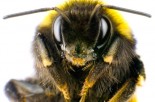For example, bee stings and bug bites might happen more often in the summer than they do at any other time.
What are the different types of reactions to bee stings?
Local Reactions
- The sting involves injecting venom into the human from the bee's stinger.
- The main symptoms are pain, itching, swelling and redness at the sting site.
- Severe pain or burning at the site lasts 1-2 hours. Itching often follows the pain.
- Swelling: Normal swelling from venom can increase for 24 hours following the sting. Stings of the upper face can cause severe swelling around the eye, but this is harmless.
- Redness: Bee stings can normally become red. That doesn't mean they are infected. Infections rarely occur in stings.
- The redness can last three days and the swelling seven days.
Anaphylactic Reaction
- A severe life-threatening allergic reaction is called anaphylaxis.
- The main symptoms are difficulty breathing and swallowing starting within two hours of the sting.
- Anaphylactic reactions to bee stings occur in four out of a 1,000 children.
What about tick bites? What can you do to protect your child from getting bitten and becoming sick?
David L. Hill, MD, FAAP, shares the different reactions your child might have against bee stings and bites, as well as what you can do to treat them.








